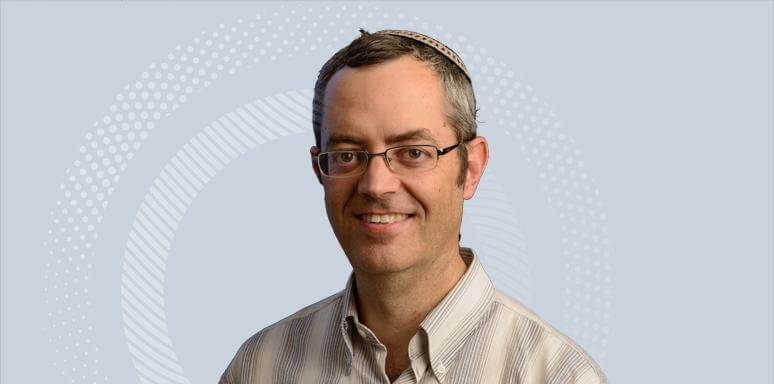Prof. Dror Pixler from the Faculty of Engineering and the Institute of Nanotechnology is developing optical tools that expand diagnostic and healing capabilities

The research of Prof. Dror Pixler, head of the Institute for Nanotechnology and Advanced Materials and faculty member at the Faculty of Engineering at Bar-Ilan University, focuses on the development of optical tools using nanophotonics for applied and research purposes. 60% of Prof. Pixler's developments are in the field of medicine (detection and healing), 20% in the field of cosmetics and 20% are used for remote sensing. The main subject that occupies him is CMI - Correlative multimodal imaging, a combination of different optical technologies to obtain a multidimensional image and the development of biological logic gates.
"After a long training in the field of physics and computer science, the combination of theoretical and applied science was required, and the Faculty of Engineering was my natural home," says Prof. Pixler. "In a young and very supportive environment, I was able to build a laboratory and take in talented students who promoted the field. The applications of our developments change the way of looking at existing systems, by making it possible to see the same thing in several tools, with each tool having additional information in relation to the other."
Prof. Pixler has published over 120 articles, among them in the prestigious nanotechnology journals ACS Nano and Nano Letters. He won three prestigious research grants from the ISF (National Science Foundation) and many other competitive funds, and was recognized as a Senior Research Fellow in the World Photonics Association (SPIE).
Among his academic positions, Prof. Pixler served as the chairman of the teaching committee and the chairman of the disciplinary committee and is a member of the coordinating committee at Bar-Ilan St. In addition to this, among others, he is a member of the nano committees of the Ministry of Health, the 8400 health network project, and the Israeli Optics Association, and edits three scientific journals in optics.
"The sky is not the limit in research," he says, "but I have three goals in my position at the academy: to help those who need help." Who knows if I wasn't put in place today just to help that one who needed it; to make foreign scientists visit Israel and fall in love with it; To bring to the attention of the general public that my activity at the academy is directly related to them and important to their lives."
- "To enable every lover of knowledge and science and art lovers to see how the combination between scientists and artists takes place"
- A nanotechnology researcher from Bar Ilan won an award in the UK for a method for the non-invasive detection of cancer in the oral cavity
- President of Bar-Ilan University: within 5 years we will recruit 20 Israeli scientists staying abroad to the nanotechnology center
- The computer will turn on in a second
